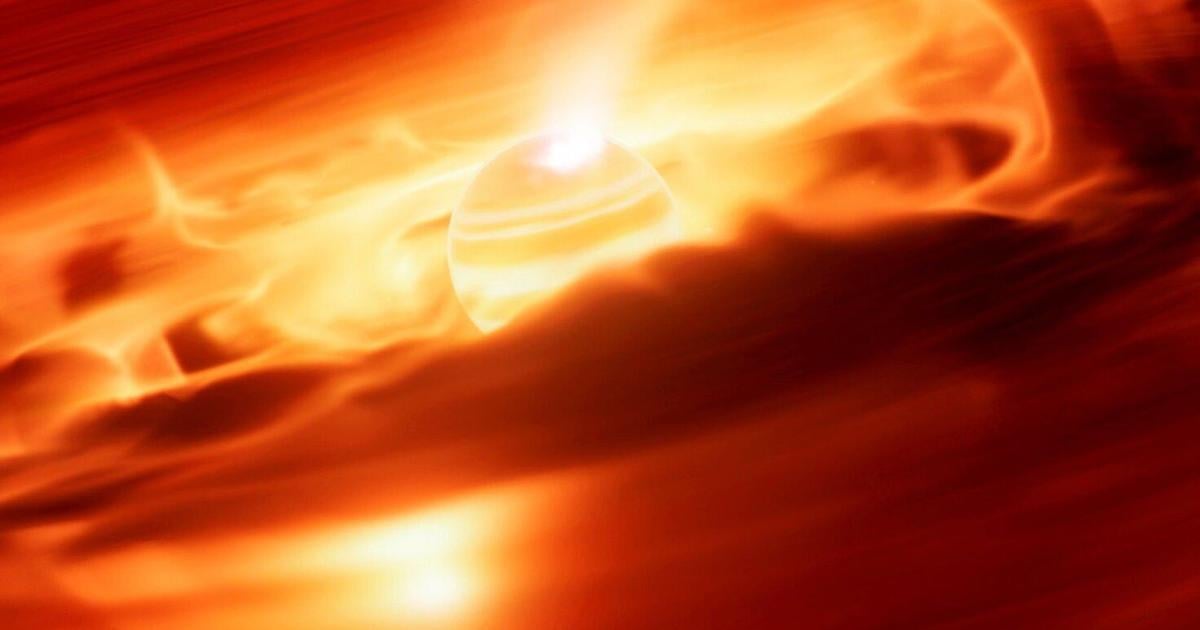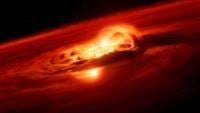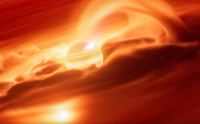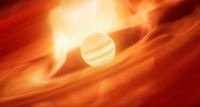Artist’s impression shows Cha 1107-7626, a rogue planet located about 620 light-years from Earth. (ESO / L Calçada / M Kornmesser via SWNS)
By Stephen Beech
A “rogue planet” is growing at a record-breaking rate of six billion tons per second, reveals new research.
Located around 620 light-years away from Earth, scientists say it has experienced a record-breaking “growth spurt” – “gobbling up” gas and dust at a “furious” pace.
Unlike the planets in our Solar System, so-called “rogue planets” don’t orbit stars, free-floating on their own instead.
The new observations, made with the European Southern Observatory’s Very Large Telescope (ESO’s VLT), located in Chile’s Atacama Desert, reveal that the planet is eating up gas and dust from its surroundings at a rate of six billion tons a second.
It is the strongest growth rate ever recorded by a planet of any kind, according to the study by an international team of astronomers published in The Astrophysical Journal Letters.
Study lead author Dr Víctor Almendros-Abad, an astronomer with Italy’s National Institute for Astrophysics (INAF), said: “This is the strongest accretion episode ever recorded for a planetary-mass object.”
He added: “People may think of planets as quiet and stable worlds, but with this discovery we see that planetary-mass objects freely floating in space can be exciting places.”
The newly studied object, which has a mass five to 10 times greater than Jupiter, is located about 620 light-years away in the Chamaeleon constellation.
Officially named Cha 1107-7626, the planet is still forming and is fed by a surrounding disc of gas and dust.
The material constantly falls onto the free-floating planet, a process known as accretion.
But researchers have now found that the rate at which the planet is accreting is not steady.
By August this year, the planet was accreting at a rate of six billion tons per second, around eight times faster than just a few months before.
“Rogue planets” don’t orbit stars, free-floating on their own instead. (ESO / L Calçada / M Kornmesser via SWNS)
Study senior co-author Professor Ray Jayawardhana, of Johns Hopkins University in Baltimore, US, said: “We’ve caught this newborn rogue planet in the act of gobbling up stuff at a furious pace.
“Monitoring its behavior over the past few months, with two of the most powerful telescopes on the ground and in space, we have captured a rare glimpse into the baby phase of isolated objects not much heftier than Jupiter.”
He added: “Their infancy appears to be much more tumultuous than we had realised.”
Co-author Dr. Aleks Scholz, an astronomer at the University of St Andrews in Scotland, said: “The origin of rogue planets remains an open question: are they the lowest-mass objects formed like stars, or giant planets ejected from their birth systems?”
He says the findings indicate that at least some rogue planets may share a similar formation path to stars since similar bursts of accretion have been spotted in young stars before.
Co-author Dr. Belinda Damian, also a St Andrews astronomer, said: “This discovery blurs the line between stars and planets and gives us a sneak peek into the earliest formation periods of rogue planets.”
By comparing the light emitted before and during the burst, the research team gathered clues about the nature of the accretion process.
They found that magnetic activity appears to have played a role in driving the dramatic infall of mass, something that has only been observed in stars before.
The rogue planet is located around 620 light-years away from Earth. (ESO / L Calçada / M Kornmesser via SWNS)
The researchers say that this suggests that even low-mass objects can possess strong magnetic fields capable of powering such accretion events.
The team also found that the chemistry of the disc around the planet changed during the accretion episode, with water vapor being detected during it but not before.
That phenomenon had been spotted in stars, but never in a planet of any kind.
Jayawardhana said: “We’re struck by quite how much the infancy of free-floating planetary-mass objects resembles that of stars like the Sun.
“Our new findings underscore that similarity, and imply that some objects comparable to giant planets form the way stars do, from contracting clouds of gas and dust accompanied by disks of their own, and they go through growth episodes just like newborn stars.”
Co-author Professor Amelia Bayo, an ESO astronomer, added: “The idea that a planetary object can behave like a star is awe-inspiring and invites us to wonder what worlds beyond our own could be like during their nascent stages.”





